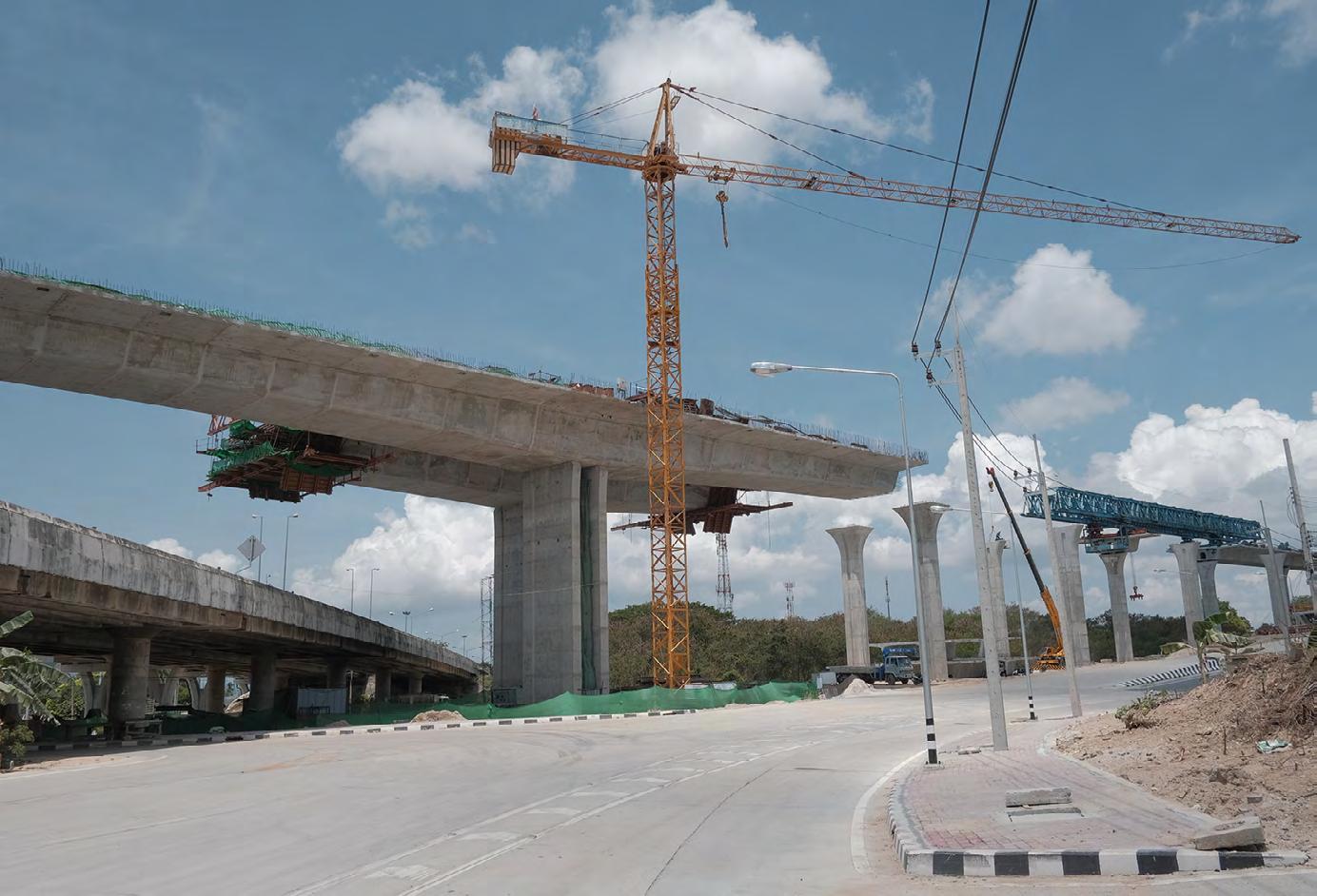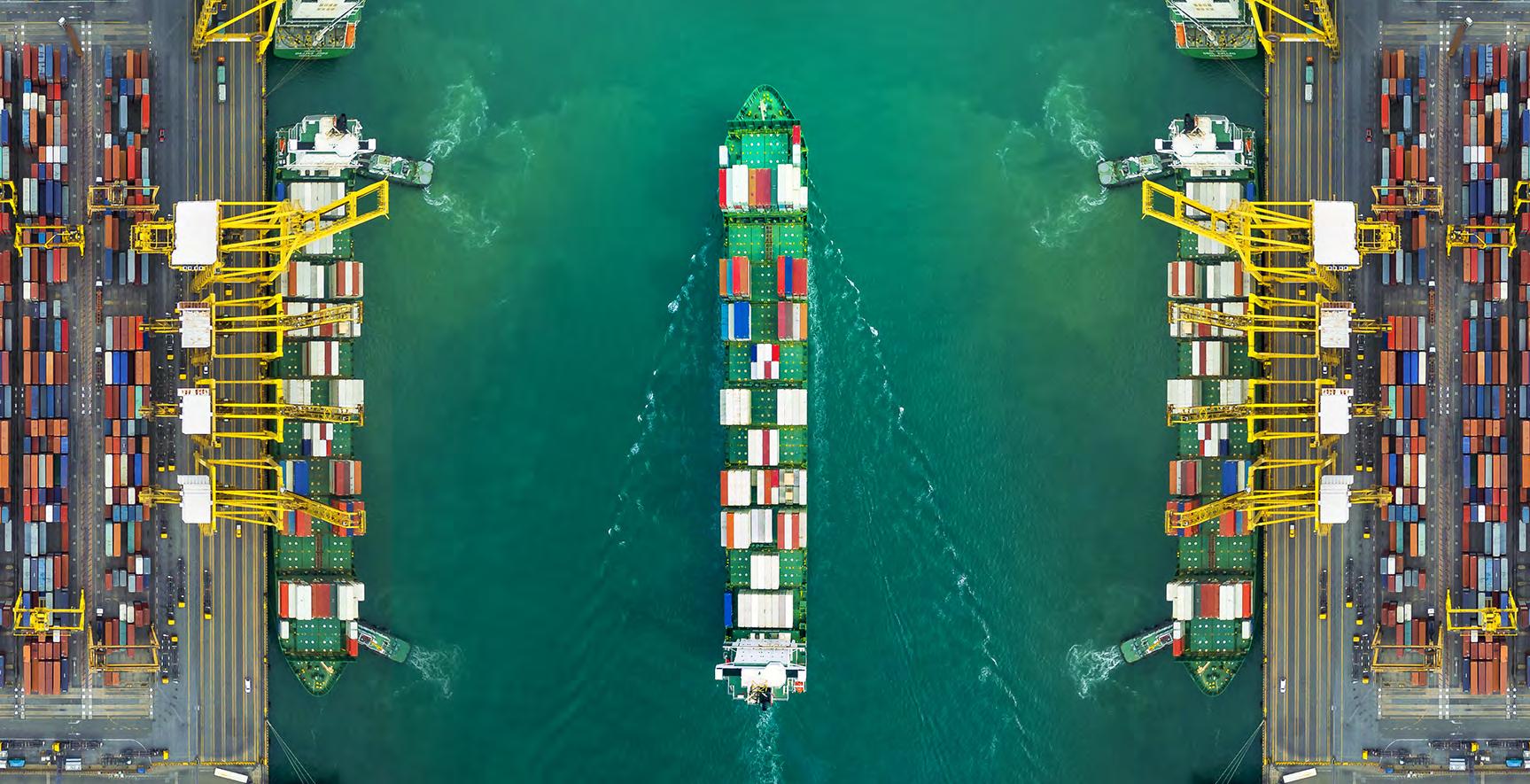
6 minute read
New momentum for Thailand’s most important economic corridor Thomas Hundt
The industries in the Eastern Economic Corridor (EEC) are under a process of modernisation and innovation. The adequate infrastructure will also be provided. Thailand is now awarding the major EEC transport projects.
The Thai Cabinet approved the Eastern Economic Corridor (EEC) regional development programme on 4th January 2017. The programme calls for a massive expansion of the three provinces located south-east of Bangkok, Chachoengsao, Chonburi and Rayong.
Advertisement
Special industrial zones, transport projects planned
The National Assembly has anchored the funding principles and framework conditions of the EEC in the Act for the Eastern Special Development Zone, which entered into force on 15 May 2018. Companies from eligible sectors receive special privileges in the EEC provinces such as: • Receiving ownership of land without permission according to the Land Law; • Leasing of land for 50 years with the possibility of extension for an additional 49 years; • Preferential tax and employment conditions for foreigners; • Exemption from exchange controls; • Licences under the Factory and Construction Supervision Act may be issued by the Secretary-General of the EEC Committee in order to simplify administrative procedures.
EEC already a leading South-East Asian industrial hub
positive balance. In 2018, Thailand’s national investment promotion agency, the Board of Investment (BOI), approved 231 investment projects within the EEC with a total value of US$ 9.7 billion.
The EEC’s predecessor, the Eastern Seaboard Development, was launched 30 years ago, so Chachoengsao, Chonburi and Rayong provinces generate already around one-fifth of the country’s total economic output. The corridor has thus developed into the major South-East Asian location for the automotive, electronics, food processing and tourism sectors.
Among other things, Thailand has become the largest manufacturer of passenger cars in South-East Asia and the world’s secondlargest producer of hard disk drives. The country is also the world’s largest exporter of many processed foods, while its successes in tourism are remarkable – Thailand is the most visited country in Asia after China.
Thailand 4.0 defines the future of industries
The industries in the EEC should reach new stages of development. The strategy paper Thailand 4.0, which was also adopted by the Government of Thailand in 2017, defines as the special promotion sectors manufacturing
of next-generation automobiles, smart electronics, food of the future and biotechnology. The country’s medical and wellness tourism should also be modernised and tailored to the needs of wealthy customers.
Under Thailand 4.0 it is planned to develop entirely new sectors as well. The growth model calls for domestic business oppotunities in digitization, automation,aviation, logistics, the biofuel and biochemical industries. Under the leadership of the respective ministries, new industryspecific development zones are currently established in the EEC.
Designation/target industries Size/location Stage of development/Internet
Digital Park/digital technology, Internet of 113 hectares in Si Racha district, New tender for an operator in January Things (IoT), artificial intelligence (AI). Chonburi province. 2020 by CAT Telecom (http://digitalparkthailand.org)
Eastern Economic Corridor of innovation/ 560 hectares in Wangchan Valley, Start of construction by National Science aerospace, automation, modern agriculture, Rayong province. and Technology Development Agency in biofuels, biochemicals, modern battery and February 2019 (http://www.eeci.or.th). automotive technology, and medical technology.
Medical hub/modern health services, nursing 90 hectares in Banglamung district, Planed by Thammasat University facilities. Chonburi province
Source: EEC.
EEC scores with some positive features
State support and suitable business parks are some of the criteria that investors evaluate when they consider a new investment location. Above all, entrepreneurs need a qualified workforce, modern infrastructure, inexpensive logistics, suitable suppliers and a business-friendly environment.
Business is easy. In the Ease of Doing Business Ranking, where the World Bank compares business-friendly conditions worldwide, Thailand is ranked 21st, even ahead of Germany (22nd).
In the Logistics Performance Index (LPI), the World Bank ranks Thailand at 32 alongside Hungary and South Africa. Germany occupies first place. Logistics and transport are relatively expensive in Thailand, while customs clearance is a weak point.
In terms of international competitiveness as an emerging country, Thailand is in a relatively good position with its ranking 40th, only three positions behind Poland. In the occupational skills sub-category, however, Thailand is only ranked at 73rd.
Lack of skilled workers causes concern
should have at least a Bachelor’s degree. However, it is estimated that the surrounding VET institutions and universities will provide only one-third of the required skilled labour force. New vocational training centres are therefore emerging within the EEC. Many industrial companies are also implementing their own training initiatives.
In order to make the EEC more attractive for workers, smart cities worth living in are to be created. The National Smart City Committee, which includes representatives from the Ministries of Transport, Digitalization and Energy, is working on action plans for 10 pilot smart cities in Chachoengsao, Rayong and Chonburi provinces as well as in Bangkok, Phuket, Chiang Mai and Khon Kaen (see https://smartcitythailand.or.th). Amata, Thailand’s largest industrial park development company, is interested in building a smart city with a modern infrastructure on a 43-sq km developed industrial area in Chonburi province.
The massive infrastructure projects for the EEC
The expansion of U-Tapao Airport in Rayong province includes a third terminal, a railway station and a new apron. The cost is estimated to be more than US$ 9 billion. A railway project will connect the airport with the airports of Don Muang and Suvarnabhumi in Bangkok via a high-speed railway line costing approximately US$ 7 billion.

The expanded container por t of Laem Chabang will cope with the increased sea freight in the EEC. In addition, the new oil and gas terminals at the Map Ta Phut deep-sea port will meet the rising energy demand of the EEC refineries and petrochemical complexes.
connect EEC sites within the country and internationally. Private investors will carry out the Public-private partnerships projects. For PPP projects, a fast track procedure was set up in 2017 to speed up awarding of contracts. Although most contracts have been awarded, the contract details and start of constructions are not yet known.
Contact details: Thomas Hundt Director Thailand, Cambodia, Myanmar, Laos GERMANY TRADE & INVEST www.gtai.com
Infrastructure projects in the EEC
Name Investment Status Notes (US$ billion)
U-Tapao Airport 9.5 Tender by by Royal Thai Navy. Offers from Third passenger terminal, an air cargo Aviation City three consortia. Zhengzhou Airport centre, free trade zone, Aviation Training Economic Zone (China), co-operation Centre, office buildings. agreement dated 29 August 2019.
High-Speed Rail link 7.3 PPP contract signed end October 2019 220 km High-speed rail line, Connection for Three Airports between the State Railway of Thailand of Don Mueang Airports, Suvarnabhumi, and consortium led by Charoen Pokphand U-Tapao. Construction time five years. Group
Laem Chabang 5.1 Awarded to PTT (Thailand), Gulf (Thailand) Expansion of container annual capacity Deep-Sea Port, and China Harbour Engineering. by 10.4 million Twenty-foot Equivalent Phase III Units at the Roll-on/Roll-off Terminal for turnover of an additional 1 million vehicles annually. Construction period – five years.
Map Ta Phut Industrial 1.8 PPP contract between Industrial Estate 160 hectares of land reclamation, Port, Phase III Authority of Thailand and PTT and Gulf expansion of the port for the transshipment Energy Development (Thailand), 1 October of liquid, bulk and gas containers 2019. Commissioning date –2025.
MRO Centre 0.3 Planned by the Civil Aviation Committee Aircraft maintenance centre U-Tapao Airport and Civil Aviation Authority of Thailand. (maintenance, repair and overhaul), MoU between Thai Airways and Airbus.








